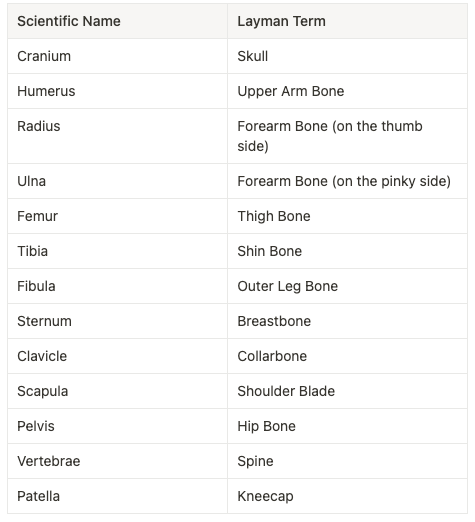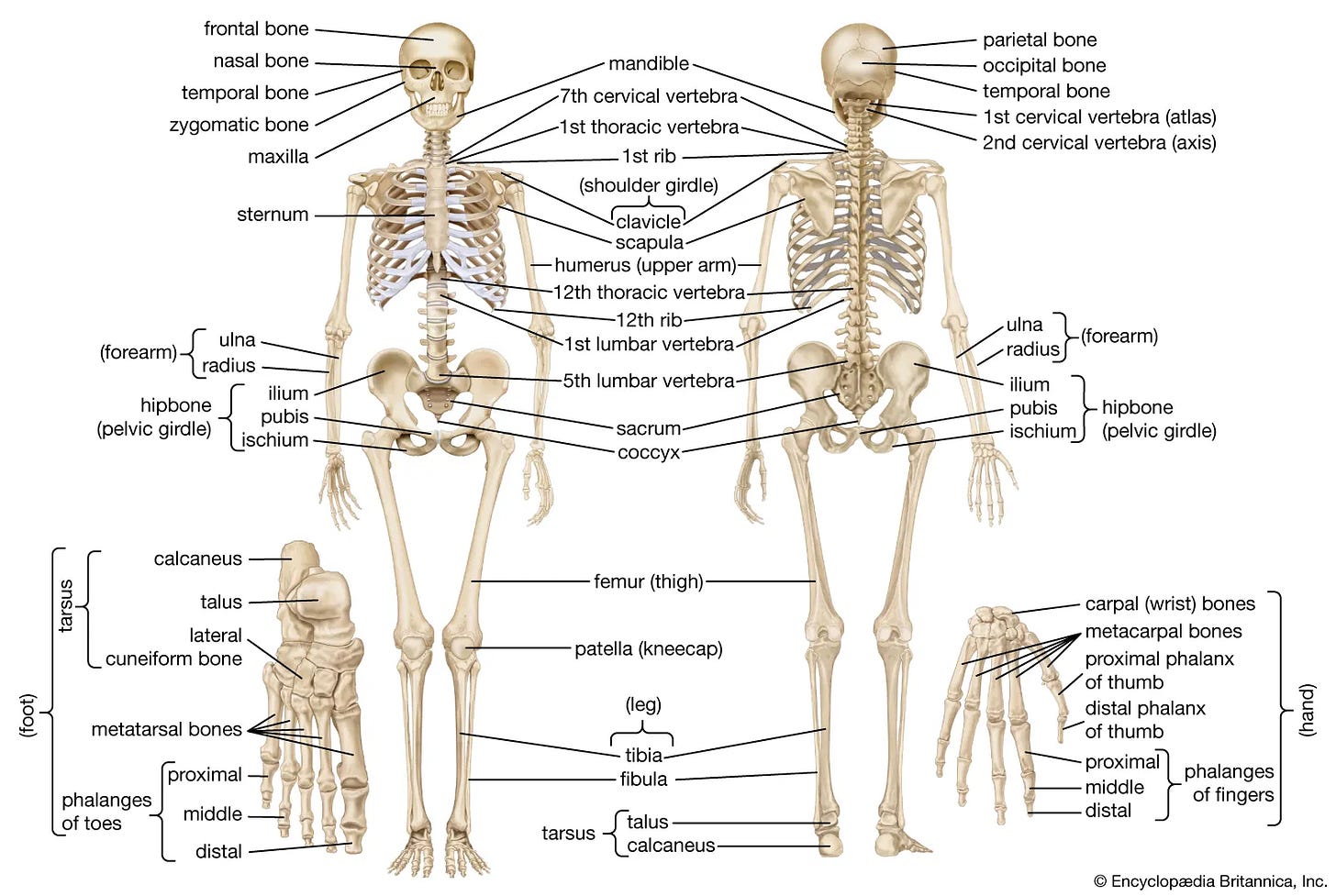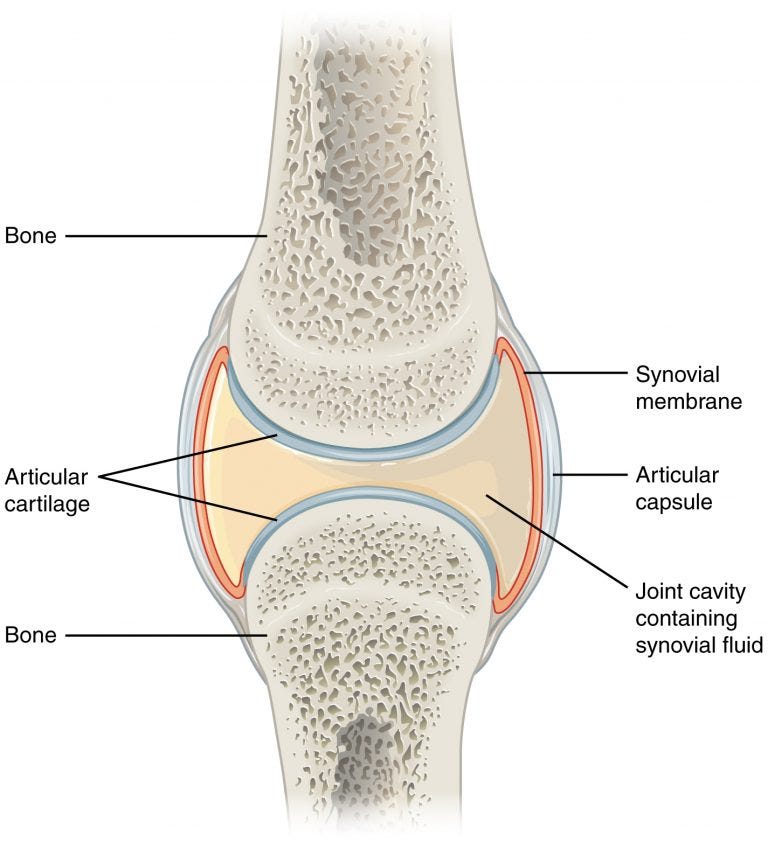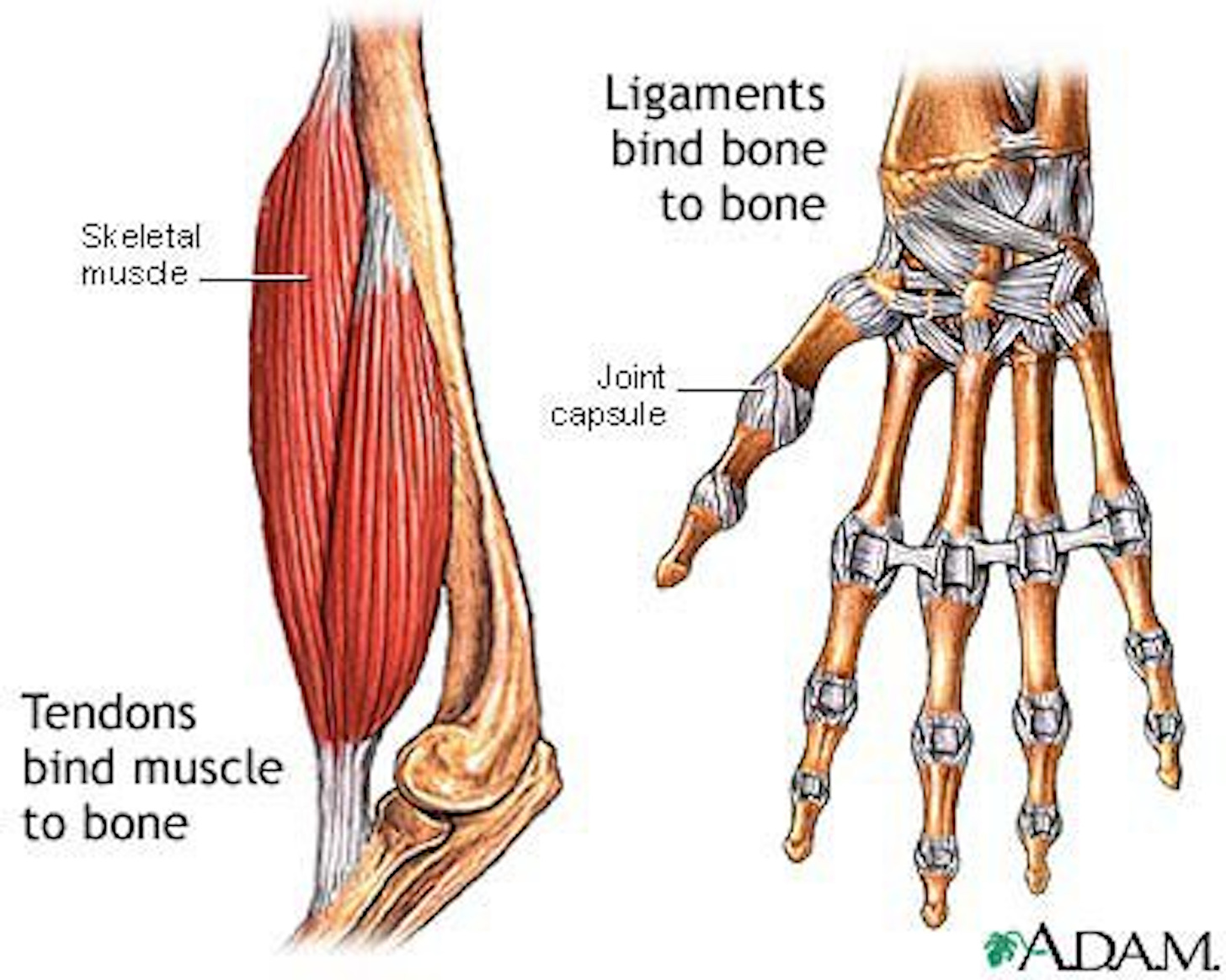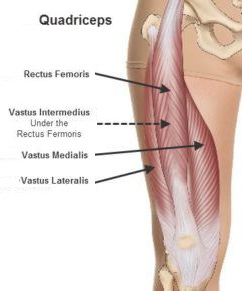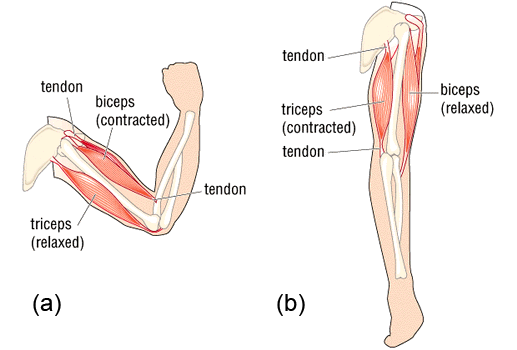2. Anatomy - Skeleton & Muscles
This article covers the Skeletal and Muscular systems. These two systems work together to create movement.
The Skeletal System
The skeletal system is the frame of the body. It provides support and also shields vital organs. The skull protects the brain, the ribcage guards the heart and lungs, and the vertebrae surround the spinal cord. Often students are required to memorise every bone and muscle, but this isn’t needed for coaching. Over time you will learn these names as they keep popping up. Familiarity with the scientific name of the major bones and muscle groups is a good place to start.
This table provides the scientific names of some bones along with their more common layman terms.
Bones are organised into several categories:
Long bones, like the femur and humerus, act as levers for motion.
Short bones, such as those in the wrist and ankle, offer stability.
Flat bones, like the scapula and skull, serve both as protective shields and attachment sites for muscles.
Irregular bones, like the vertebrae or pelvis, have their own unique shape and purpose.
Despite seeming simple, bones are a living tissue with a complex structure. At this stage, those details are not important to know, however some points relevant to coaching are:
As children, our bones grow in length at special sites called Growth Plates. As adults the growth plates seal up and the bones can no longer grow longer.
Bone density (and strength) can be increased in adulthood through weight bearing activity. This just means any activity where a person has to support their own bodyweight, or an external weight. So running is in, but swimming is not.
Red Blood Cells are produced in the bone marrow, which is found at the center of long bones.
Joints are where bones meet. We are going to focus on a particular type of joint called a Synovial Joint, which allows smooth movement. The main two types of joints to know are:
Hinge joints, like the elbow and knee, allow bending in one direction.
Ball-and-socket joints, like the shoulder and hip, provide a wide range of motion.
Synovial Joints - Joints that contain a cavity between the bones which is filled by a fluid called Synovial Fluid. The ends of the bones are also covered by smooth cartilage. The fluid and cartilage work together to help the bones move over each-other without friction.
Each athletes skeleton will vary slightly. Differences in height are a clear example. The length of the arms or legs compared to the length of the spine is another example.
These differences can be helpful for some sports, like overall height for Basketball or arm length for Swimming. They also must be taken into account when selecting exercises in the gym, as the effectiveness of exercises will differ between athletes due to their levers.
Ligaments and Tendons
Ligaments join bone to bone. They cannot contract like a muscle, however they can act as shock-absorbers and passively stablise a joint. There are over 900 in the body.
Tendons join muscle to bone. When a muscle contracts, it pulls on the tendon which causes the bone to move.
The Muscular System
There are three main types of muscles in the body:
Skeletal Muscles: These are the muscles you can control when you want to. When skeletal muscles are contracted, they move the body.
Smooth Muscles: These are found in the walls of organs like the stomach and intestines. They work without conscious thought.
Cardiac Muscles: This muscle type is unique to the heart. It contracts automatically and is highly resistant to fatigue.
We are going to focus on Skeletal muscles for this article.
Muscles work through a process called contraction. When a signal arrives from the brain through the nerves, they get shorter, pulling on the bones they're attached to. This contraction is what causes movement.
Muscles each have their own blood supply which brings oxygen and nutrients to power the movement. The blood also takes waste products away to be disposed of. These processes will be covered in following articles.
Each muscle contracts in one direction, meaning it causes one specific movement. Understanding what movement a muscle causes is important when assessing the requirements of your sport and what exercises an athlete should do in training. Highly mobile joints, like the shoulder and hip, will have many groups of muscles to enable complex movements to occur.
For example, the muscles on the front of the thigh are often referred to as the Quads. This comes from the scientific name for the muscle group, Quadriceps. It gets its name from the fact that 4 separate muscles make up the Quads; Vastus Lateralis, Vastus Medialis, Vastus Intermedius, Rectus Femoris. Each of these muscles contribute to the movement of the leg.
Around the hip you’ve also got several other muscle groups that contribute to movement;
Glutes (Butt) - Gluteus Maximus, Gluteus Medius, Gluteus Minimus
Hamstrings (Back of thigh) - Biceps Femoris, Semitendinous, Semimembranous
Adductors (Inner thigh/Groin) - Adductor Brevis, Adductor Longus, Adductor Magnus, Gracilis, Pectineus
As mentioned before, memorising these muscles is not vital. However it is important to appreciate that many different muscles and muscle groups contribute to the complex motion seen in sport.
Finally, muscle groups also are commonly found as opposing pairs. This means Muscle X will cause the opposite movement to Muscle Y. The easiest example of this are the Biceps and Triceps. Both cause the forearm to move at the elbow, but the biceps contracting causes the arm to bend (a) and the triceps contraction cause it to straighten (b). To cause movement, one must relax for the other to contract. If they both contract, the arm becomes rigid and does not bend.
Next Up
That covers the Skeletal and Muscular Systems. Next up we are going to look at how the Nervous System sends signals and controls this movement.




